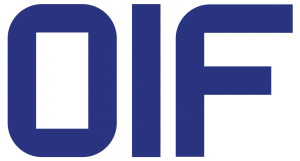OIF Q2 2025 Technical and MA&E Committees Meeting Advances Critical Projects and Technical Collaboration, Highlights FlexE 3.0 and Coherent CMIS 1.4 Progress
The meeting featured a guest speaker from Telia Estonia, and Jia He was re-elected as Networking & Operations Working Group Chair
Fremont, Calif. — OIF, where the optical networking industry’s interoperability work gets done, held its Q2 2025 Technical and Market Awareness & Education Committees Member Meeting May 5-8, 2025 in Tallinn, Estonia.
The meeting advanced technical specifications and key projects essential to scaling next-generation networks, highlighted progress on related implementation agreements and featured guest speaker Tarko Tikan of Telia Estonia. It also featured a recap of OIF’s interoperability demo at OFC 2025, highlights from the 448Gbps Signaling for AI Workshop, and discussion around the upcoming ECOC interoperability demo, building on the success and momentum from OFC.
Key project updates include:
C-CMIS 1.4 Implementation Agreement (IA): The latest update to the C-CMIS IA introduces expanded support for coherent interfaces, including enhanced maintenance/replacement signal control, enhanced consequent action control, payload type support, additional alarming, CD target set and a new CDB command to display Coherent Application Attributes. These updates strengthen interoperability for ZR and ZR+ modules at 400G, 800G and beyond, laying the groundwork for managing a broader class of coherent pluggable modules.
FlexE 3.0 Implementation Agreement (IA): Building on previous IAs, FlexE 3.0 supports Flex Ethernet Groups composed of 800G Ethernet PHYs and introduces 100G calendar slots and payload type overhead. These features address growing demands in high-capacity transport and hyperscale environments, increasing flexibility and enabling scalable Ethernet service delivery.
In addition, OIF announced that presentations from its recent 448Gbps Signaling for AI Workshop—featuring perspectives from hyperscalers, analysts and member companies driving next-gen electrical signaling—are now publicly available on its website. The workshop, held April 15–16 in Santa Clara, provided a comprehensive look at the ecosystem readiness and future direction of 448G, with robust participation and insight from across the industry, and is directly driving work within OIF moving forward.
“As network requirements evolve and grow more complex, OIF’s collaborative environment is where real, measurable progress happens,” said OIF Officer and Technical Committee Vice Chair Sam Kocsis (Amphenol). “Our member meetings are designed to accelerate technical consensus and ensure alignment across the ecosystem.”
In Technical Committee updates, Jia He (Huawei) was re-elected as Chair of the Networking & Operations Working Group.
The meeting also featured guest speaker Tarko Tikan of Telia Estonia, who shared insights into Telia’s approach to building a resilient, autonomous and secure national network. Tikan outlined the company’s transition to a fully converged IP/MPLS infrastructure, highlighted Telia’s strong cybersecurity posture—including fully isolated management systems—and emphasized Estonia’s ability to implement agile, standards-based network strategies tailored for national resilience.
“It was an honor to join OIF as a guest speaker and share Telia Estonia’s perspective on building secure and resilient networks,” Tikan said. “Normally, I just work with what OIF has specified—but this time, I had the chance to sit in on a Working Group meeting and see that process in action. It gave me a new level of respect for the expertise and collaboration that drive OIF’s work.”
About OIF
OIF is where the optical networking industry’s interoperability work gets done. With more than 25 years of effecting forward change in the industry, OIF represents the dynamic ecosystem of 160+ industry leading network operators, system vendors, component vendors and test equipment vendors collaborating to develop interoperable electrical, optical and control solutions that directly impact the industry’s ecosystem and facilitate global connectivity in the open network world. Connect with OIF on LinkedIn, on X, on Bluesky and at https://www.oiforum.com/.
PR Contact:
Leah Wilkinson
Wilkinson + Associates for OIF
leah@wilkinson.associates
703-907-0010

